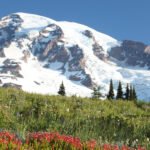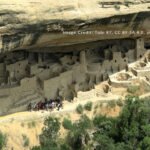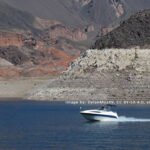The clearest way into the universe is through a forest wilderness.
John Muir
10 Best Wildlife Parks in USA (An Ultimate Guide)
Table of Contents
Nestled across the diverse landscapes of the United States lie sanctuaries of nature’s magnificence, where wildlife thrives amidst stunning vistas and pristine environments. Welcome to a comprehensive guide to the 10 Best Wildlife Parks in USA, where the pulse of wilderness beats strong, embracing the spirit of exploration and conservation. From the ancient mountains of Glacier National Park to the lush rainforests of Olympic National Park, these havens echo with the calls of diverse wildlife, inviting adventurers and nature enthusiasts to discover the wonders of the natural world. Join us on a journey through these remarkable landscapes as we uncover the treasures of wildlife and nature in Yellowstone, Yosemite, Everglades, Grand Teton, Denali, Great Smoky Mountains, Rocky Mountain, Zion, Glacier, and Olympic National Parks.
Here’s a list of 10 best national parks in USA for Wildlife exploration:
1. Yellowstone National Park (Wyoming, Montana, Idaho)
Yellowstone National Park stands as a testament to nature’s marvels, spanning across three states and covering over 2.2 million acres of pristine wilderness. It’s not only the USA’s first national park but also a global icon renowned for its rich biodiversity and geothermal features.
Wildlife
Yellowstone hosts a diverse array of wildlife, creating an unparalleled experience for nature enthusiasts. Among the famed inhabitants are:
Bison: Symbolic of the park, these majestic creatures roam freely across its grasslands.
Grizzly Bears and Black Bears: Visitors may catch glimpses of these impressive predators.
Wolves: Yellowstone is a prime spot for wolf watching, a species successfully reintroduced into the ecosystem.
Elk, Moose, Bighorn Sheep: These animals, among others, contribute to the park’s vibrant ecosystem.
Geothermal Wonders
The park’s volcanic hot spot births an extraordinary showcase of geothermal features:
Old Faithful: An iconic geyser, known for its predictable eruptions every 90 minutes or so.
Grand Prismatic Spring: Showcasing vivid colors, it’s the largest hot spring in the park and a photographic gem.
Norris Geyser Basin, Mammoth Hot Springs, and more: Each area presents its unique geological wonders.
Landmarks and Attractions
Grand Canyon of the Yellowstone: A breathtaking canyon carved by the Yellowstone River, offering stunning vistas.
Yellowstone Lake: Serene and vast, it provides opportunities for fishing, boating, and picturesque landscapes.
Lamar Valley: A prime location for wildlife sightings, especially wolves and grizzlies.
Best Times to Visit
Summer (June to August): The park bustles with activity, wildlife is abundant, and most facilities are open.
Spring (April to May) and Fall (September to October): Ideal for quieter visits, with changing landscapes and fewer crowds.
Winter (November to March): Offers unique experiences like snowshoeing and wildlife observation in a snow-clad setting.
Activities and Accommodation
Hiking, wildlife watching, camping, and ranger-led programs are popular activities.
The park offers various lodging options, campsites, and visitor centers providing educational resources.
Conservation Initiatives
Yellowstone has played a pivotal role in wildlife conservation, notably in the successful reintroduction of wolves into the ecosystem, contributing to the natural balance.
Travel Tips
Advance planning for accommodations is crucial, especially during peak seasons.
Respect park guidelines for wildlife viewing and safety, maintaining a safe distance from animals.
2. Yosemite National Park (California)
Nestled in California’s Sierra Nevada mountains, Yosemite National Park is a testament to the splendor of nature. Its 1,200 square miles encompass awe-inspiring granite cliffs, towering waterfalls, diverse flora, and abundant wildlife.
Wildlife
Black Bears: Iconic to the park, black bears roam its forests, foraging for food.
Mule Deer: Easily spotted in meadows and wooded areas.
Coyotes, Bobcats, and Mountain Lions: Less commonly seen but integral parts of the park’s ecosystem.
Various bird species: From majestic bald eagles to colorful songbirds, the park is a haven for birdwatchers.
Natural Wonders
El Capitan and Half Dome: Towering granite monoliths that attract rock climbers and offer stunning vistas.
Yosemite Falls, Bridalveil Fall, and others: Spectacular waterfalls that captivate visitors year-round.
Mariposa Grove: Home to some of the oldest and largest sequoia trees in the park, including the famous Grizzly Giant.
Landmarks and Attractions
Yosemite Valley: The heart of the park, featuring iconic landmarks and accessible trails.
Glacier Point and Tunnel View: Scenic viewpoints offering breathtaking panoramas of the valley and its landmarks.
Best Times to Visit
Spring (April to June) and Fall (September to November): Mild temperatures, fewer crowds, and beautiful natural colors.
Summer (July to August): Peak season with more visitors, but ideal for hiking and outdoor activities.
Winter (December to March): Snow-covered landscapes create a serene and unique atmosphere, perfect for winter sports.
Activities and Accommodation
Hiking: Trails cater to all skill levels, from easy strolls to challenging hikes like the Half Dome trail.
Camping, lodging, and numerous visitor centers providing educational resources and guided tours.
Conservation Efforts
Yosemite emphasizes preservation and conservation efforts, ensuring the protection of its natural resources and wildlife habitats.
Travel Tips
Reserve accommodations well in advance, especially during peak seasons.
Follow park guidelines for wildlife encounters and safety measures.
For more information on Yosemite National Park, click here.
3. Everglades National Park (Florida)
Everglades National Park, a UNESCO World Heritage Site, is a unique and iconic wetland preserve in southern Florida, covering 1.5 million acres. It represents the largest tropical wilderness of any kind in the US, showcasing a diverse ecosystem of marshes, mangroves, and estuaries.
Wildlife
Alligators and Crocodiles: Iconic inhabitants often seen in the park’s waterways.
Manatees: These gentle giants inhabit the coastal waters and estuaries.
Various Bird Species: From wading birds like herons and egrets to colorful species like roseate spoonbills and the endangered snail kite.
Panthers, Bobcats, and Raccoons: Among the many mammals that call the Everglades home.
Unique Ecosystem
Mangrove Forests: These coastal forests provide crucial habitats for many species, offering shelter and breeding grounds.
Sawgrass Prairies: Vast expanses of sawgrass dominate the landscape, supporting a unique array of plant and animal life.
Cypress Swamps and Pine Rocklands: Other distinct habitats within the park contributing to its biodiversity.
Landmarks and Attractions
Anhinga Trail and Shark Valley: Popular spots for wildlife viewing and birdwatching.
Flamingo Visitor Center: Access to the park’s southernmost point, offering ranger-led programs and water-based activities.
Wilderness Waterway and Everglades Backcountry: Opportunities for kayaking, canoeing, and multi-day adventures.
Best Times to Visit
Winter (December to March): Cooler temperatures and less humidity make this peak season for wildlife viewing and outdoor activities.
Spring (April to May) and Fall (October to November): Mild weather and fewer crowds, ideal for exploring the park.
Summer (June to September): Hot and humid, but offers unique experiences and quieter visits.
Activities and Accommodation
Boat tours, tram rides, hiking, biking, and ranger-led programs offer various ways to explore the park. Camping, lodges, and visitor centers providing educational resources and guided tours.
Conservation Efforts
Everglades National Park is at the forefront of restoration projects aimed at preserving and restoring the park’s natural hydrology and habitats.
Travel Tips
Bug repellent is essential, especially in the warmer months.
Respect wildlife and follow park guidelines to ensure safety for both visitors and animals.
4. Grand Teton National Park (Wyoming)
Nestled in the heart of the Rocky Mountains, Grand Teton National Park is renowned for its majestic mountain scenery, pristine lakes, and diverse wildlife. The park covers approximately 310,000 acres, showcasing the iconic Teton Range.
Wildlife
Moose, Elk, and Bison: Commonly spotted throughout the park, especially in meadows and along waterways.
Grizzly Bears and Black Bears: Inhabiting the forests and higher elevations, though sightings are less frequent.
Wolves: Part of ongoing conservation efforts, wolves have been reintroduced and are occasionally seen.
Iconic Landscapes
Teton Range: Towering peaks reaching over 13,000 feet, offering breathtaking vistas and hiking opportunities.
Jackson Hole Valley: A picturesque valley framed by the mountains, providing a variety of recreational activities.
Landmarks and Attractions
Jenny Lake: Crystal-clear waters surrounded by stunning mountain scenery, offering hiking trails and boat rides.
Snake River: Known for scenic float trips, fishing, and providing a habitat for wildlife.
Teton Glacier and Cascade Canyon: Natural wonders offering hiking and exploration.
Best Times to Visit
Summer (June to August): Peak season with access to trails, boat tours, and various activities.
Fall (September to October): Spectacular foliage and fewer crowds, perfect for photography and peaceful hikes.
Winter (November to March): Snow-covered landscapes and opportunities for skiing, snowshoeing, and wildlife tracking.
Activities and Accommodation
Hiking, mountaineering, fishing, wildlife viewing, and ranger-led programs cater to all levels of outdoor enthusiasts.
Lodges, cabins, campsites, and visitor centers providing information and educational resources.
Conservation Efforts
Grand Teton National Park focuses on preserving its ecosystems, wildlife habitats, and maintaining a delicate balance between conservation and recreation.
Travel Tips
Check for road and trail conditions, especially during winter months.
Respect wildlife and adhere to park guidelines for safe viewing and interaction.
5. Denali National Park and Preserve (Alaska)
Denali National Park and Preserve, encompassing over 6 million acres, is a rugged expanse of wilderness in the heart of Alaska. It’s crowned by Denali, North America’s tallest peak, standing at 20,310 feet.
Wildlife
Grizzly Bears and Black Bears: Among the park’s iconic residents, often spotted foraging for food.
Wolves: The park supports a significant wolf population, offering rare sightings of these elusive animals.
Moose, Caribou, Dall Sheep: Abundant wildlife that roams the park’s tundra and forests.
Golden Eagles, Ptarmigans, and other bird species: Enthusiasts will find a rich avian diversity.
Majestic Landscapes
Denali (formerly Mount McKinley): The centerpiece of the park, offering breathtaking vistas and climbing challenges.
Tundra and Taiga: Vast expanses of boreal forest and treeless tundra create a diverse and unique landscape.
Eielson Visitor Center and Wonder Lake: Accessible points offering stunning views and wildlife sightings.
Landmarks and Attractions
Denali Park Road: A scenic drive (mostly unpaved) providing access to various landscapes and wildlife viewing.
Hiking Trails: Ranging from short walks to multi-day treks, catering to different skill levels and interests.
Best Times to Visit
Summer (June to August): Peak season with extended daylight, blooming wildflowers, and access to most areas.
Fall (September to October): Foliage turns vibrant colors, and wildlife prepares for winter, ideal for photography.
Winter (November to March): Limited access, but opportunities for snowshoeing, cross-country skiing, and serene landscapes.
Activities and Accommodation
Wildlife viewing, hiking, camping, bus tours, and ranger-led programs cater to outdoor enthusiasts.
Campgrounds, lodges, and visitor centers providing information and educational resources.
Conservation Efforts
Denali focuses on preserving its wilderness, maintaining natural habitats, and supporting ongoing research on its ecosystems.
Travel Tips
Plan and book accommodations and tours well in advance, especially during peak seasons.
Respect wildlife and follow park guidelines for viewing and safety.
6. Great Smoky Mountains National Park (North Carolina, Tennessee)
Great Smoky Mountains National Park, straddling the border of North Carolina and Tennessee, is renowned for its ancient mountains, diverse ecosystems, and rich cultural heritage. It stands as the most visited national park in the United States.
Wildlife
Black Bears: The park is home to an estimated 1,500 black bears, offering ample opportunities for sightings.
White-Tailed Deer, Elk, Wild Turkeys: Commonly spotted throughout the park’s forests and meadows.
Red Wolves, Coyotes, Bobcats: Less frequently seen but part of the park’s diverse ecosystem.
Natural Beauty
Great Smoky Mountains: These ancient mountains, among the oldest on Earth, offer stunning vistas and diverse habitats.
Clingmans Dome: The park’s highest point, providing panoramic views and an iconic observation tower.
Cades Cove: A picturesque valley with historic buildings, popular for wildlife viewing and cycling.
Landmarks and Attractions
Roaring Fork Motor Nature Trail and Newfound Gap Road: Scenic drives offering access to various landscapes and viewpoints.
Appalachian Trail: A portion of this famous trail traverses the park, attracting hikers and outdoor enthusiasts.
Cultural Heritage
Historic Buildings: Preserved homesteads, churches, and mills provide insights into the area’s history and culture.
Mountain Culture: The park celebrates the heritage of Appalachian communities through programs and events.
Best Times to Visit
Spring (April to June) and Fall (September to November): Mild weather, blooming wildflowers, and vibrant foliage.
Summer (July to August): Popular for outdoor activities, though it can get crowded.
Winter (December to March): Quieter, with opportunities for snow sports and unique landscapes.
Activities and Accommodation
Hiking, wildlife viewing, camping, auto touring, and ranger-led programs cater to diverse interests.
Campgrounds, cabins, lodges, and visitor centers provide amenities and educational resources.
Conservation Efforts
Great Smoky Mountains National Park focuses on preserving its ecosystems, protecting habitats, and maintaining the delicate balance of its natural resources.
Travel Tips
Plan visits during weekdays or off-peak hours to avoid crowds.
Respect wildlife and follow park guidelines for safe encounters.
7. Rocky Mountain National Park (Colorado)
Rocky Mountain National Park, situated in the heart of the Rockies, spans over 415 square miles and showcases dramatic mountain landscapes, diverse ecosystems, and abundant wildlife.
Wildlife
Elk: One of the park’s most iconic animals, often seen in meadows and along rivers.
Mule Deer, Moose, Bighorn Sheep: Commonly spotted throughout the park’s diverse habitats.
Mountain Lions, Black Bears, Coyotes: Less frequently seen but part of the park’s wildlife.
Majestic Landscapes
Longs Peak: The park’s highest summit, attracting climbers and offering stunning views.
Trail Ridge Road: A scenic drive reaching elevations above 12,000 feet, providing breathtaking vistas.
Bear Lake and Moraine Park: Popular spots for hiking, wildlife viewing, and serene natural beauty.
Landmarks and Attractions
Alpine Visitor Center and Estes Park: Visitor centers providing information, exhibits, and access to park activities.
Numerous Hiking Trails: Ranging from easy walks to challenging alpine routes, catering to various skill levels.
Flora and Fauna
Diverse Ecosystems: From montane forests to subalpine and alpine tundra, supporting a rich variety of plant and animal life.
Wildflowers: The park boasts an impressive display of wildflowers in the spring and summer months.
Best Times to Visit
Summer (June to August): Peak season with access to most trails, wildlife sightings, and wildflowers in bloom.
Fall (September to October): Stunning foliage and fewer crowds, perfect for photography and peaceful hikes.
Winter (November to March): Opportunities for snow sports, snowshoeing, and serene snowy landscapes.
Activities and Accommodation
Hiking, wildlife watching, camping, scenic drives, and ranger-led programs cater to outdoor enthusiasts.
Campgrounds, cabins, lodges, and visitor centers offering amenities and educational resources.
Conservation Efforts
Rocky Mountain National Park emphasizes preservation, habitat protection, and ecosystem conservation.
Travel Tips
Check for road and trail conditions, especially during winter months.
Respect wildlife and adhere to park guidelines for safe viewing and interaction.
8. Zion National Park (Utah)
Zion National Park, nestled in the southwestern United States, encompasses 229 square miles of stunning landscapes characterized by towering sandstone cliffs, slot canyons, and diverse wildlife.
Wildlife
Bighorn Sheep: One of the park’s iconic species, often seen navigating the steep cliffs.
Mule Deer, Desert Bighorn, Coyotes: Commonly spotted throughout the park’s diverse terrain.
California Condors: An endangered species, with a reintroduction program in the park.
Majestic Landscapes
Zion Canyon: The park’s centerpiece, carved by the Virgin River, offering iconic vistas and hiking trails.
Angels Landing and The Narrows: Popular hikes providing breathtaking views and unique experiences.
Landmarks and Attractions
Emerald Pools, Weeping Rock, and Canyon Overlook: Scenic spots accessible via shorter trails.
Zion Human History Museum and Visitor Centers: Providing insights into the park’s natural and cultural history.
Ecosystem Diversity
Desert Flora: The park showcases a variety of desert plants, adapted to the arid climate.
Riparian Areas: Oasis-like spots along waterways that support diverse plant and animal life.
Best Times to Visit
Spring (March to May) and Fall (September to November): Mild temperatures, blooming wildflowers, and less crowded trails.
Summer (June to August): Hot temperatures, but ideal for higher-elevation hikes and canyoneering.
Winter (December to February): Quieter months with occasional snow, providing unique vistas.
Activities and Accommodation
Hiking, canyoneering, rock climbing, wildlife watching, and ranger-led programs cater to outdoor enthusiasts.
Campgrounds, lodges, and visitor centers offering amenities and educational resources.
Conservation Efforts
Zion National Park emphasizes conservation of its unique ecosystems, preserving natural habitats, and protecting endangered species like the California Condor.
Travel Tips
Reserve shuttle tickets in advance during peak seasons for access to popular trailheads.
Stay hydrated, especially during hot months, and follow park guidelines for safe exploration.
9. Glacier National Park (Montana)
Glacier National Park, spanning over 1 million acres in Montana, is a pristine wilderness characterized by rugged mountains, pristine lakes, and abundant wildlife. It’s often referred to as the “Crown of the Continent.”
Wildlife
Grizzly Bears: Among the iconic inhabitants, though sightings are less common due to their elusive nature.
Mountain Goats, Bighorn Sheep, Moose: Frequently seen in various habitats throughout the park.
Wolverines, Lynx, Gray Wolves: Less frequently spotted but part of the park’s diverse ecosystem.
Majestic Landscapes
Going-to-the-Sun Road: A scenic drive offering stunning vistas of mountains, valleys, and glaciers.
Many Glacier, Lake McDonald, and Two Medicine: Beautiful areas featuring pristine lakes and hiking trails.
Landmarks and Attractions
Logan Pass Visitor Center: Provides access to high alpine terrain and hiking trails like the Highline Trail.
Many Glacier Hotel: A historic lodge offering stunning views of the surrounding mountains and Lake McDonald.
Glaciers and Ecosystems
Glacial Features: Despite the retreat of glaciers due to climate change, remnants can still be seen.
Alpine Meadows and Dense Forests: Supporting a variety of plant and animal life in distinct ecosystems.
Best Times to Visit
Summer (June to August): Peak season with access to trails, boat tours, and various activities.
Fall (September to October): Stunning foliage, fewer crowds, and excellent wildlife viewing opportunities.
Winter (November to March): Limited access, but opportunities for snow sports and serene snowy landscapes.
Activities and Accommodation
Hiking, wildlife viewing, camping, scenic drives, and ranger-led programs cater to outdoor enthusiasts.
Campgrounds, lodges, cabins, and visitor centers providing amenities and educational resources.
Conservation Efforts
Glacier National Park focuses on preserving its ecosystems, protecting habitats, and monitoring wildlife populations.
Travel Tips
Check for road and trail conditions, especially during winter months.
Respect wildlife and follow park guidelines for safe viewing and interaction.
10. Olympic National Park (Washington)
Olympic National Park, situated in the northwest corner of Washington state, covers nearly a million acres of diverse ecosystems, including lush rainforests, rugged coastlines, and glaciated peaks.
Wildlife
Roosevelt Elk: Among the most iconic residents, commonly seen grazing in the park’s meadows.
Black Bears, Cougars, Bobcats: Part of the park’s predator population, though sightings are less frequent.
Bald Eagles, Puffins, Marbled Murrelets: Birds that inhabit the coastal areas and forests.
Majestic Landscapes
Hurricane Ridge: Stunning mountain vistas accessible via a scenic drive and hiking trails.
Hoh Rainforest and Quinault Rainforest: Verdant, moss-covered forests with unique ecosystems.
Pacific Coastline: Rugged beaches, sea stacks, and tide pools offering scenic beauty.
Landmarks and Attractions
Sol Duc Falls, Lake Crescent, and Rialto Beach: Popular spots showcasing the park’s natural beauty.
Olympic National Park Visitor Center: Providing information on trails, activities, and ranger-led programs.
Ecosystem Diversity
Temperate Rainforests: Home to unique plant and animal life, with some of the wettest spots in the continental US.
Alpine Meadows and Glaciers: High-elevation landscapes offering distinct habitats and stunning vistas.
Best Times to Visit
Summer (June to August): Peak season with access to most areas, pleasant weather, and a range of activities.
Spring (April to May) and Fall (September to October): Mild weather, fewer crowds, and blooming wildflowers.
Winter (November to March): Opportunities for snow sports in higher elevations and peaceful off-season visits.
Activities and Accommodation
Hiking, wildlife viewing, camping, scenic drives, and ranger-led programs cater to outdoor enthusiasts.
Campgrounds, lodges, cabins, and visitor centers offering amenities and educational resources.
Conservation Efforts
Olympic National Park focuses on preserving its diverse ecosystems, protecting habitats, and maintaining the delicate balance of its natural resources.
Travel Tips
Be prepared for variable weather conditions, especially in higher elevations.
Respect wildlife and follow park guidelines for safe viewing and interaction.
As we conclude this exploration of the 10 Best Wildlife Parks in the USA, these national treasures stand as testaments to the resilience of nature and the importance of conservation. From the iconic bison of Yellowstone to the majestic elk roaming through Rocky Mountain, these parks offer not just glimpses of wildlife but an immersion into ecosystems teeming with life. Whether it’s the rugged peaks of Grand Teton or the tranquil rainforests of Olympic, each park preserves a unique slice of the country’s natural heritage. As we continue to cherish and protect these habitats, let us remember that these parks are not just destinations; they are legacies of wilderness, inviting us to witness the awe-inspiring beauty and reminding us of the delicate balance we share with nature. Through these wild landscapes, the Best Wildlife Parks in the USA beckon, inviting us to explore, cherish, and protect them for generations to come.








It’s genuinely very difficult in this busy life to listen news on Television, so I just use world wide web for that reason, and take the most up-to-date news.
Hi americanvoyageguide.com Webmaster!
These are actually great ideas in about blogging. You have touched some pleasant things here. Any way keep up wrinting.
We stumbled over here coming from a different web page and thought I might check things out. I like what I see so now i’m following you.Look forward to finding out about your web page yet again.
Hello There. I found your blog the use of msn. This is a really well written article. I will make sure to bookmark it and come back to read extra of your useful info. Thanks for the post.
I just like the valuable information you provide on your articles.I’ll bookmark your blog and test again here frequently.I’m quite certain I’ll be informed plenty of new stuff proper right here! Good luck for the next!
Your mode of explaining everything in this piece of writing is genuinely pleasant, every one be capable of simply be aware of it, Thanks a lot.
Appreciation to my father who informed me on the topic of this web site, this website is really amazing.
I loved as much as you will receive carried out right here. The sketch is tasteful, your authored material stylish. nonetheless, you command get bought an edginess over that you wish be delivering the following. unwell unquestionably come further formerly again since exactly the same nearly very often inside case you shield this hike.
Spot on with this write-up, I really believe this site needs much more attention. I’ll probably be returning to read through more, thanks for the info!
Thank you for any other fantastic article. The place else may anyone get that type of info in such an ideal means of writing? I have a presentation subsequent week, and I’m at the search for such information.
Wow, marvelous weblog structure! How long have you ever been running a blog for? you make running a blog glance easy. The overall look of your web site is wonderful, as smartly as the content material!
When someone writes an piece of writing he/she keeps the thought of a user in his/her brain that how a user can know it. So that’s why this paragraph is outstdanding.
It’s great that you are getting ideas from this article as well as from our argument made at this time.
This paragraph will assist the internet users for building up new web site or even a blog from start to end.
Good day! Would you mind if I share your blog with my zynga group?There’s a lot of folks that I think would really enjoy your content. Please let me know. Cheers